The Best Phone and Camera Gimbals for 202
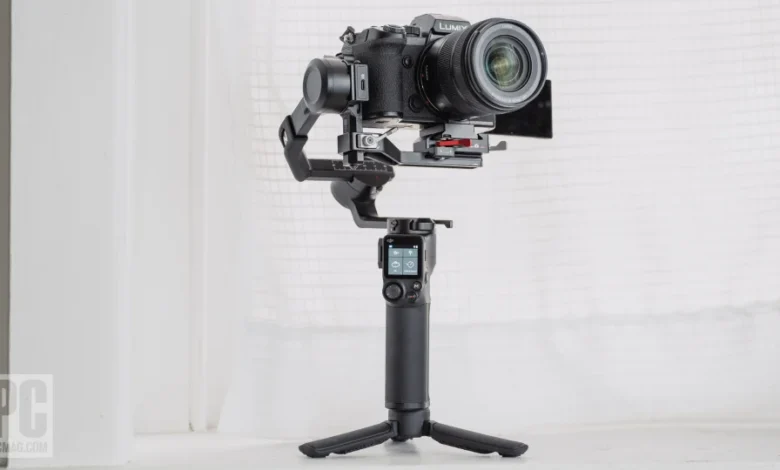
The Best Phone and Camera Gimbals for 2024
Mirrorless cameras and The Best Phone and Camera Gimbals for 2024, smartphones are incredibly capable for making movies, but no built-in stabilization system can quite get you the Steadicam look. Instead, you need a powered gimbal that uses brushless motors to keep your camera smooth and steady for POV shots or walk-and-talk vlogs. Most consumer models support one-handed operation, too, so you don’t need a full film crew to take advantage of the tech. PCMag has been covering this space for several years now, so you can be sure that our recommendations work effectively and reliably. Our current slate of Editors’ Choice winners includes the intuitive Insta360 Flow for smartphones and the advanced DJI RS 4 for mirrorless cameras, but our other picks are still worth exploring depending on your needs and gear. Before you browse our picks, read our buying guide below so you know what to expect.Gimbals Offer Powered Stabilization
For static shots, you can get stable recordings with something as simple as a sturdy set of tripod legs, typically with a fluid head for smooth pans and camera movements. If you want to move during a shot, you can opt for a video monopod, or, for rock-solid footage, a powered gimbal.

Zhiyun Crane 2S with a full-frame camera (Credit: Jim Fisher)
Gimbals balance your camera using brushless motors to keep it in place with smooth motion and no additional noise. They require some setup—you need to make sure your camera is properly centered and balanced for the best results. There’s a learning curve, but with some practice, you should be able to set up your kit in about 15 minutes.The Best Gimbal Deals This Week*
*Deals are selected by our commerce team
Once everything is up and running, a gimbal delivers perfectly smooth footage, like you get from a Steadicam on a Hollywood set or from a drone. The cameras on consumer drones use the same type of brushless motors to keep the image steady. Basic gimbals provide stabilization, typically along three axes, as well as motorized camera movement via joystick control.
Advanced models include USB camera control, wireless video transmission, motor and gear systems to drive manual focus lenses, and mounting points for accessories. Motion-lapse, 360-degree rolls, and low-angle operating modes are step-up features. Most include Bluetooth and a smartphone control app but allow operation independent of a phone, too.
Smaller gimbals embed the battery in the handle. Run times can be long enough for all-day use, and USB charging is a standard feature. Just keep in mind that when those batteries stop holding a charge, you have to replace the whole unit. Some models opt for swappable batteries instead.How to Choose the Right Gimbal
Camera gimbals come in different sizes, so make sure to pick one that can handle your setup.
A gimbal that’s too small to support your camera will deliver poor results because its motors will struggle to keep balance. Most gimbals have a payload rating that you should pay attention to, especially if you use an interchangeable lens camera. Take a look at the entire weight (and size) of your kit and pick one that’s close. You are likely to end up with a gimbal that can handle more weight than you need.
Price scales along with the amount of support—a gimbal for a smartphone or GoPro costs a lot less than one for a full-frame camera. Depending on your kit, expect to spend anywhere between $100 and $1,000 to start.
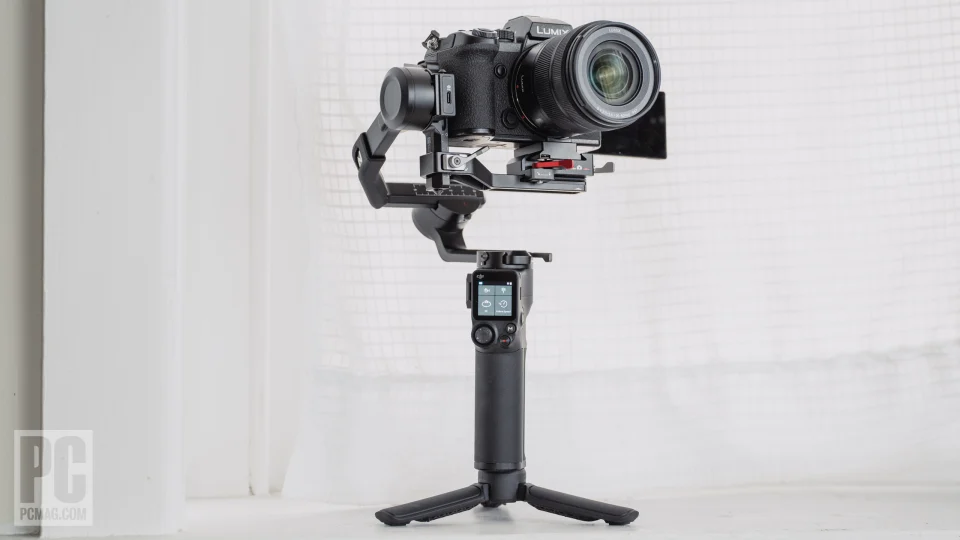
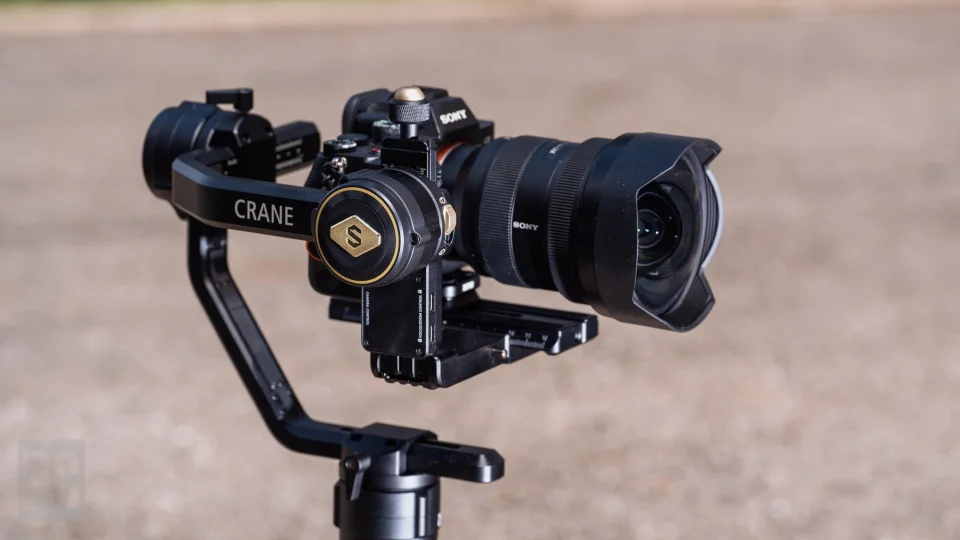
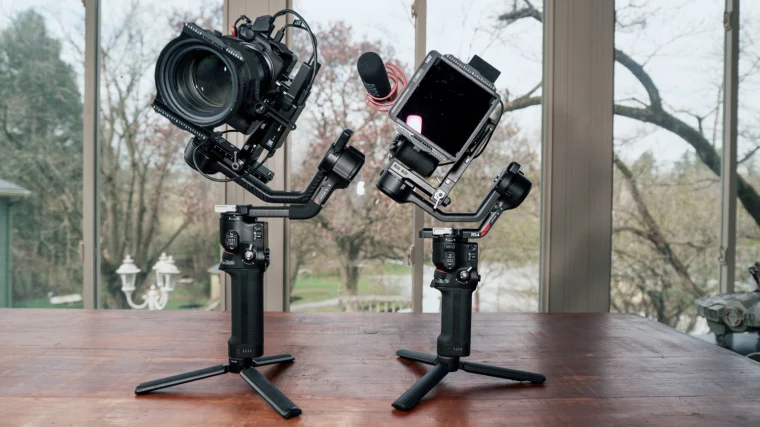
Zhiyun Weebill 2 (Credit: Jim Fisher)
You should also be realistic about what kind of lenses you can use with a gimbal. Most will reach for wide angles, but standard and short telephoto lenses are usable as well. I recommend keeping things at 85mm or wider. Wildlife photographers use gimbal tripod heads for extreme telephoto lenses, but despite sharing a name, gimbals for wildlife photography and gimbals for video cameras are very different things.
We included picks for everything from smartphones to full-frame mirrorless systems below, organized by camera type. We haven’t reviewed every gimbal on here, but make sure to check out the links to the full reviews for those we have.
Gimbals for Small Cameras and Phones
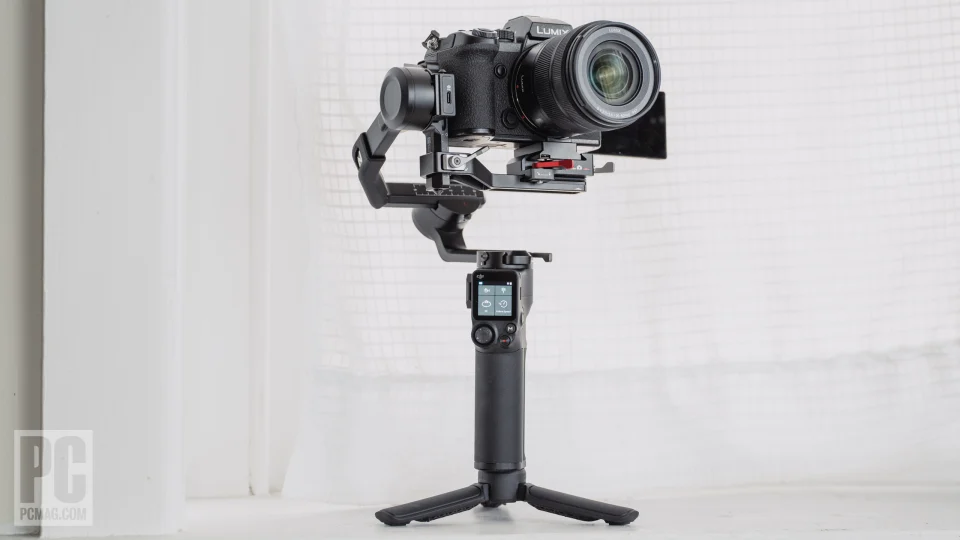
Insta360 Flow (Credit: Dave LeClair)
Gimbals for phones, compact cameras, and action cameras are typically quite small because they have less weight to handle. They’re also a lot less expensive than larger alternatives. We included a couple here that are available for less than $100, including a splash-proof gimbal for use with GoPros and other action cams.
The Insta360 Flow is our favorite gimbal for creators who use a smartphone. It stabilizes footage effectively and runs for up to 12 hours between charges. We also like its size; the gimbal folds down smaller than others and an integrated extension rod helps you get a high, wide angle for self-recorded footage. In addition, it’s quick to set up thanks to a design that doesn’t require manual balancing.
MSRP $159.00
The DJI Osmo Mobile 6 is made for phones. The gimbal has an easy-to-use magnetic mounting system and does a good job of keeping handheld video steady and smooth. The DJI Mimo companion app adds subject tracking and other useful features too, though it works better on iOS than Android. If you have the latter type of phone, consider the Insta360 Flow instead.
MSRP $159.00
The Zhiyun Smooth 5S is made just for smartphones (its app works with Android and iOS phones). It can charge your device and works with magnetic-attachment video lights to add illumination to your scene. On-handle controls and support for Vertigo dolly zooms and vortex rolling shots round out its features.
MSRP $169.00
If you want to stabilize your action cam videos, you need a gimbal that can handle some water, such as the IPX4-rated Hohem iSteady Pro4. It works with recent action cameras from GoPro, DJI, and Yi and likely offers a tangible improvement over your cam’s internal digital stabilization.
MSRP $109.00
The DJI Osmo Pocket 3 is a handheld camera with a built-in gimbal for vlogging. It records in 4K, supports motion timelapse, and works with high-quality external mics. If you like the idea of gimbal stabilization, but don’t want to fuss with mounting your phone, the Pocket might find its way into yours.
MSRP $519.00
Gimbals for Mirrorless Cameras and SLRs
DJI RS 3 Mini with full-frame camera and wide zoom lens (Credit: Jim Fisher)
If you use a camera with swappable lenses, you need to budget a bit more. The DJI RS 3 Mini ($369) and the Zhiyun Weebill 2 ($469) are both value picks that can support most mirrorless cameras.
It’s worth stepping up to the RS 4 ($549) if you use bigger lenses or want to add accessories. It supports focus motor and wireless video transmission add-ons, for instance, which you can’t use with the RS 3 Mini. For even larger cameras, gimbals like the RS 4 Pro or Zhiyun Crane 3S support more than 10 pounds of weight.
For the gimbals that work with additional accessories, manufacturers often offer them in a bundle. If you want to use follow focus, transmit video wirelessly, or take advantage of other extra features, it’s worth spending the money up front for the complete package. You often get a carrying case if you go this route, too.
The DJI RS 4 is our favorite gimbal for mirrorless cameras. It has a smart design with auto-folding and unfolding arms, as well as a removable battery pack so you can break it down for travel. Its 6.6-pound payload support is ample for full-frame cameras, and you can add a focus motor or wireless video transmission system if you want.
MSRP $549.00
The exceptionally small DJI RS 3 Mini lives up to its name. With support for 4.4-pound payloads, easy swaps between landscape and vertical video, and a tool-free setup, it’s a good pick for vloggers looking for a basic, easy-to-use stabilizer for everything from a Micro Four Thirds to a full-frame mirrorless model.
MSRP $369.00
The Zhiyun Crane 2S is a good choice if you need to handle a bigger mirrorless camera, up to seven pounds total. It includes an OLED screen for basic menu adjustment, but you can also control it via a smartphone app. It sets itself apart from the DJI RS2 series because of its swappable batteries.
MSRP $599.00
The Zhiyun Weebill 2 is a good fit for full-frame cameras without an integrated grip; we tested it with the Panasonic S5. It includes a 2.8-inch color touch display, a first for this class and a plus for first-timers who can use some visual help setting camera balance. It supports camera control, and you can add a video transmission kit for remote control and subject tracking.
MSRP $549.00
The DJI RS 4 Pro is the company’s most capable gimbal. It supports full-frame camera rigs up to 10 pounds and works with a LiDAR focusing add-on that adds autofocus support to manual lenses. It’s pretty portable, too, and includes a clever automatic locking system. It’s a good match for full-frame ILCs as well as cinema cameras like the Sony FX6.
MSRP $869.00
The Zhiyun Crane 3S handles the heaviest cinema cameras, with support for up to 14.3 pounds. It uses swappable batteries, good enough for 12 hours of power. Ergonomics are important when working with a heavier camera; the Crane 3S comes with an oversized control wheel on its side and a rear handle with controls.
MSRP $739.00


